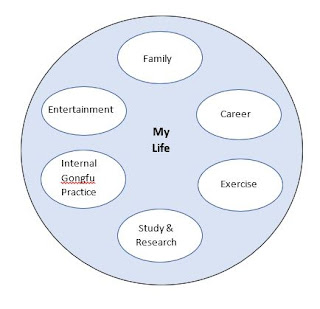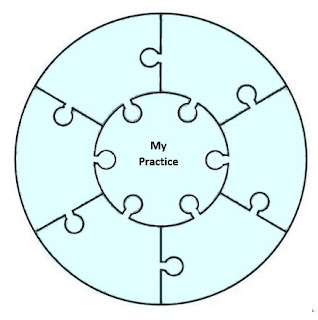This realization then shined a light on the question asked by many internal gongfu practitioners, “Why does it take so long to get it?” To this, the typical response is, “If getting it were that easy, then everyone would be a master.” Well, we need a better answer than that! This series of posts is an attempt to provide a more thoughtful response to this question.
Preparedness vs Readiness
The title of this series asks, Are you ready? To be ready means to be in condition for or to be completely prepared for something. For example, I prepare for vacation by selecting a location, scheduling travel, packing clothes, etc. On the first day of vacation, I’m ready to go. That is to say, I’m not ready unless I am prepared. These concepts are also applicable to an internal gongfu practice. Simply showing up to class or seminar does not necessarily mean I am prepared or conditioned and hence ready.
In the context of internal gongfu, some people are ready and some are not. Those who are ready will exhibit the proverbial empty cup, the uncarved block, the cognitive and kinesthetic tabula rasa. These people are either naturally this way or have achieved this state through the effort of conditioning, preparing. They are cognitively and kinesthetically ready to fill the cup anew, carve the block anew, write on the slate anew.
For those who are not ready, the time-consuming work of preparation and conditioning to become ready involves unlearning misunderstood concepts, correcting misperceptions, and changing incongruous kinesthetic habits. For these practitioners, training is a practice of emptying the proverbial cup, uncarving the block, or erasing the slate.
Unfortunately, this preparatory effort gives the false impression that “getting it” is hard to learn. Actually, learning it is easy. As I've seen with others, “getting it” can be achieved with a few years of dedicated practice given a functional combination of:
- a practitioner who is ready or needs minimal preparation and guidance,
- a system that uses a mutually understandable paradigm and instructional methods, and
- a teacher who embodies the movement principle and is able to impart the principle.
How I used to view my practice
Let’s begin with a point we probably all share in common; our various activities of daily life. Let me introduce how I used to perceive my daily life and how my internal gongfu training fit into this picture.
For the past thirty years of training, I considered my internal gongfu practices as one of several compartmentalized activities that filled my life. Each activity required its own skill set. Each activity was isolated from and not influenced by any other. The image below provides a depiction of this compartmentalization.
Even after I began experiencing how changes brought about in Wujifa class were showing up in my other activities, I continued holding onto my habitual way of compartmentalizing my life. It never occurred to me that internal gongfu practice was not just another isolated activity like my other activities.
A New Model
While reflecting on the question, “Why am I taking so long to get it?” I had the insight that the internal gongfu curriculum (the various training methods e.g., zhan zhuang) is either supported by or hindered by a variety of components that are outside of this formal training curriculum.
Although I had been aware of these various components for years under their various guises and pseudonyms, I never really understood how they influenced my training and progress. As I sat with this insight, these various disparate components slowly formed a cohesive set.
I also knew from experience that these so-called “components” are so interconnected and so intertwined and in such complex and seemingly unfathomable ways that to call them components is actually a misnomer. The beauty of being able to distill the whole into parts is that the resultant model provides an opportunity to discover how each so-called component directly influences my practice and progress.
The model that best illustrates this concept is a jigsaw puzzle as depicted below.
Whereas the previous model of “My Life” included various activities that also included my practice, in this model, my practice is at the center of my life and the surrounding puzzle pieces are the various components of my life that both influence my practice and are influenced by my practice. These surrounding components will be introduced one at a time in forthcoming posts.
Take a moment and consider how you would graphically represent your life and your practice. Would your practice look more like the first model where it is one of a variety of unrelated, compartmentalized activities or would it look more like the second model of interrelated components where each component influences each other? And what are these components for you?
In Closing
In this series of ten posts over the next ten weeks (July to September 2020), I will explore an insight into the preparing or conditioning phase of training.
If you’ve been practicing awhile and wonder why it’s taking so long to get it, then maybe my insights can help explain why it's taking so long as well as provide ideas to alter the path you are on.
And if you’re just starting and want to understand why it can take so long and get some ideas into how to shorten that time, then maybe my insights can help here too.
This series will continue with each article filling in one of the puzzle pieces until the entire puzzle is complete. We’ll wrap up by considering how this puzzle can be interpreted in an Internal Gongfu Progress Matrix and finally we’ll look at the role of the Source and Level of Instruction.
Next article in this series: Mastering Internal Gongfu: Are You Ready? Activity Patterns




No comments:
Post a Comment